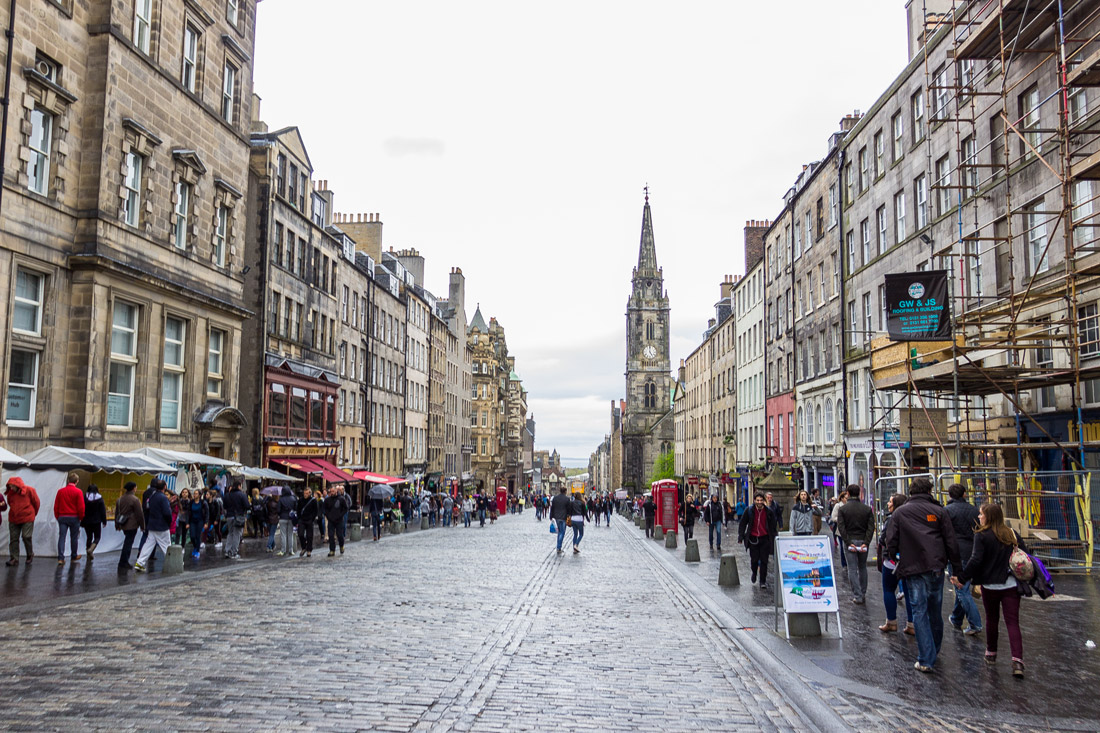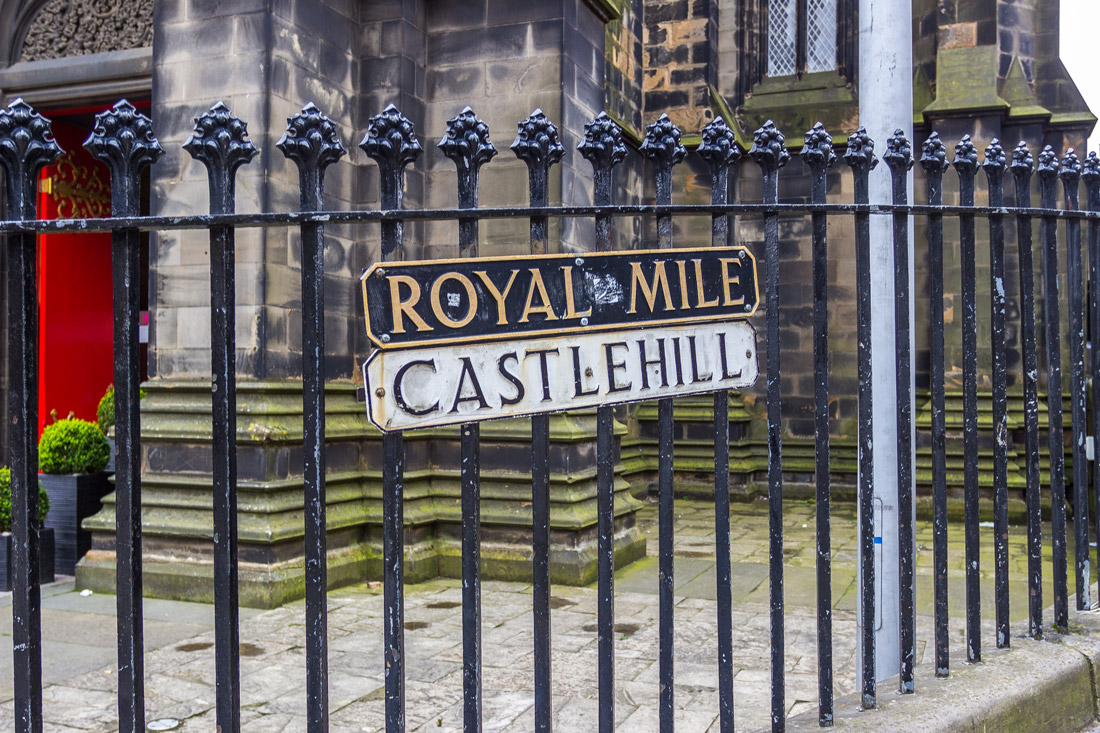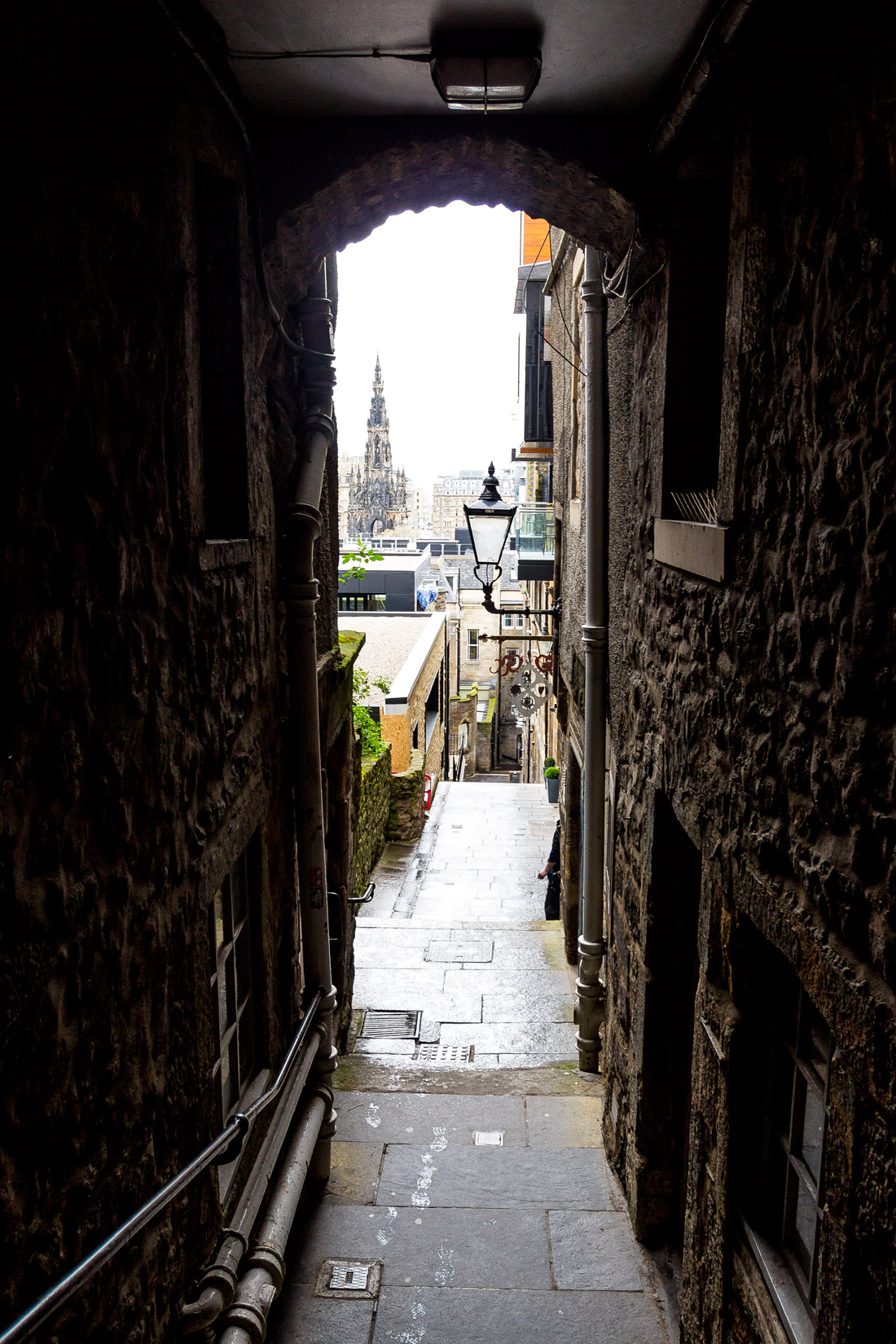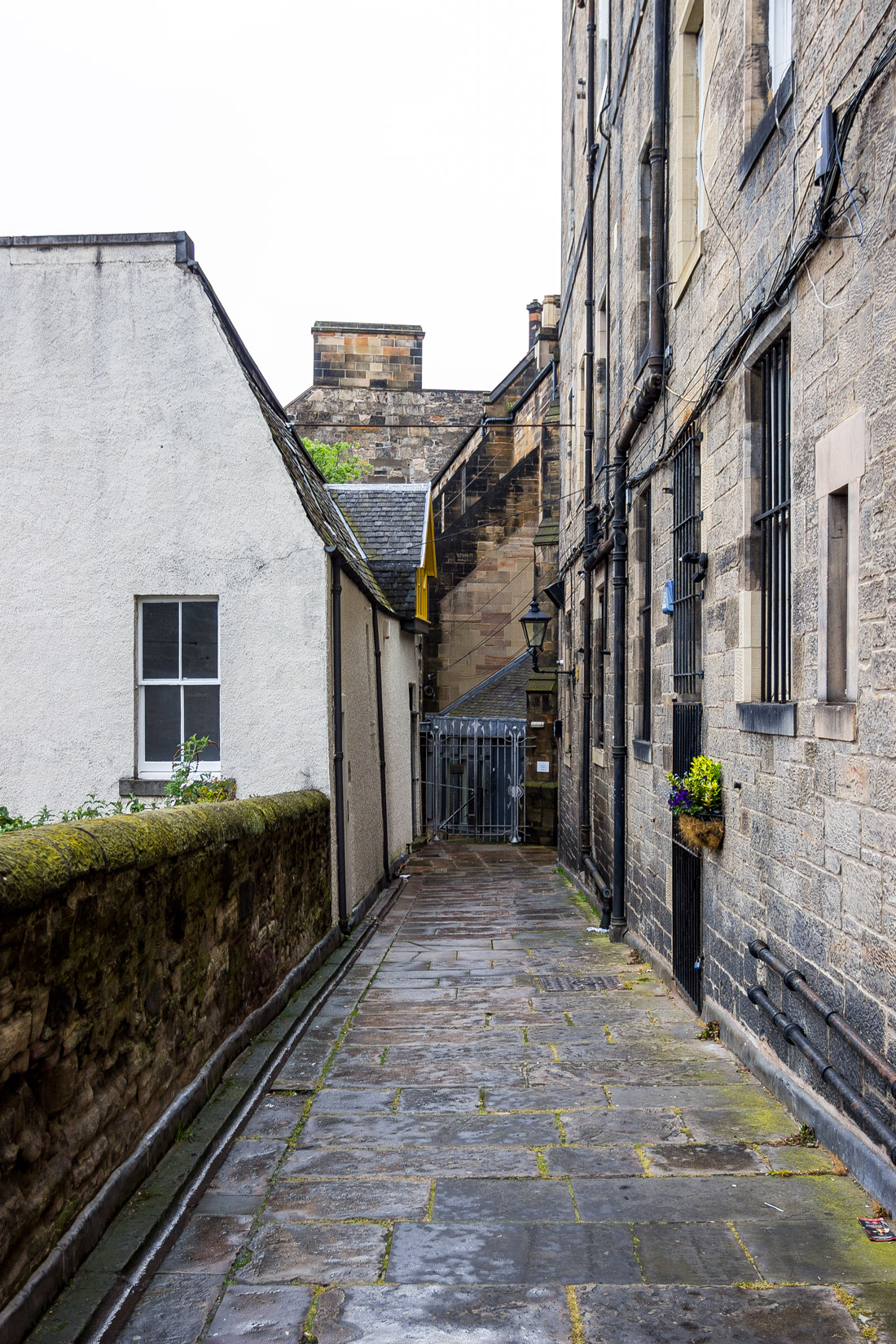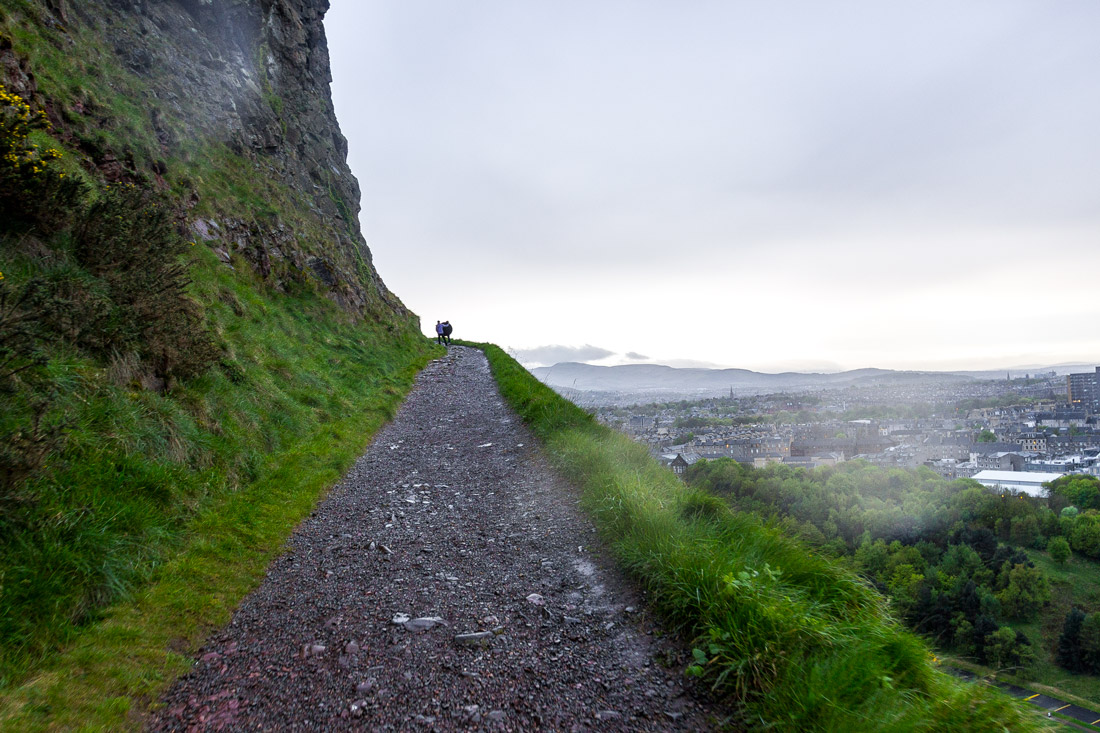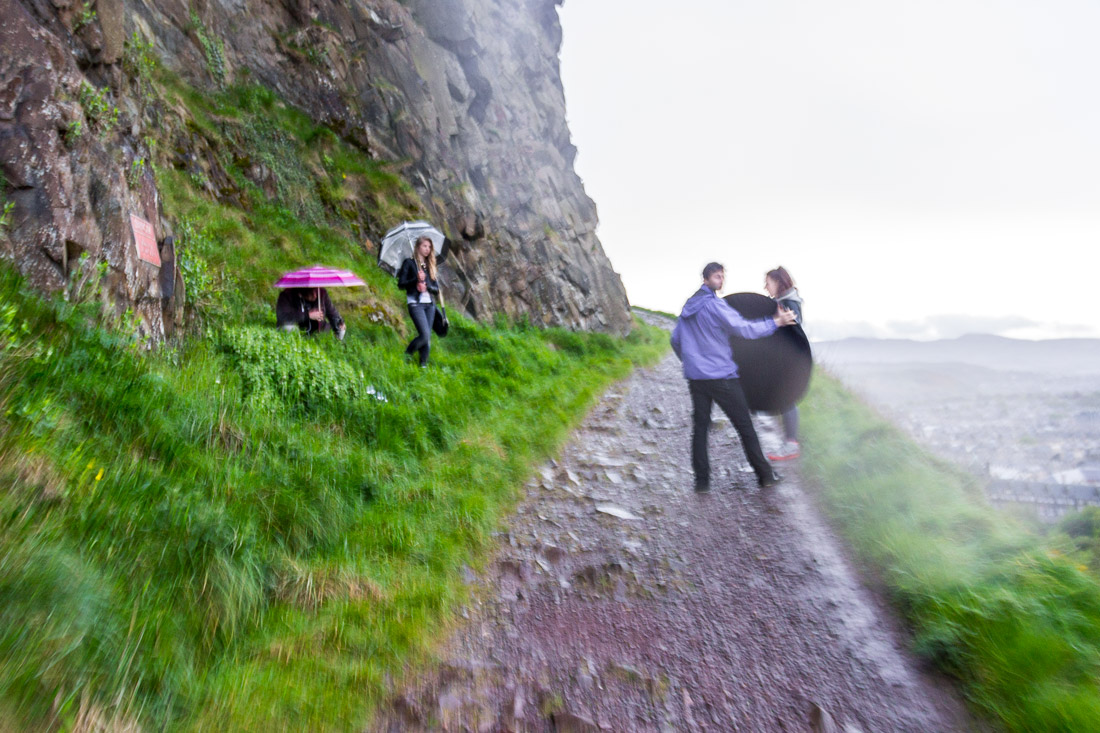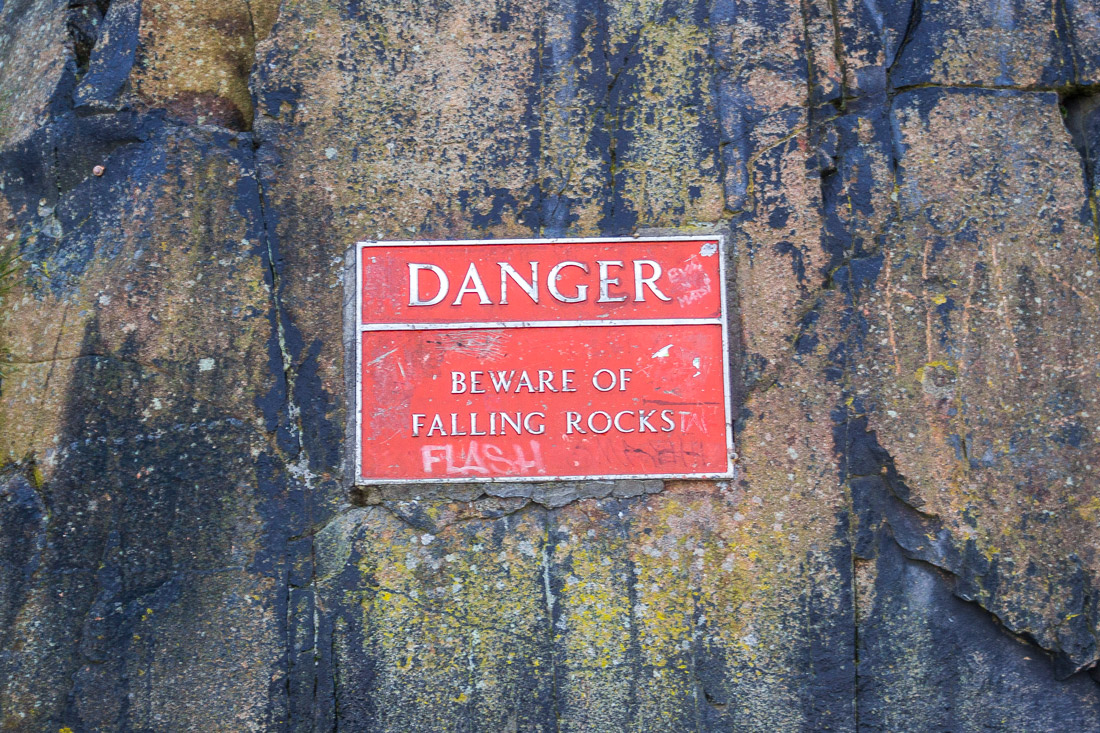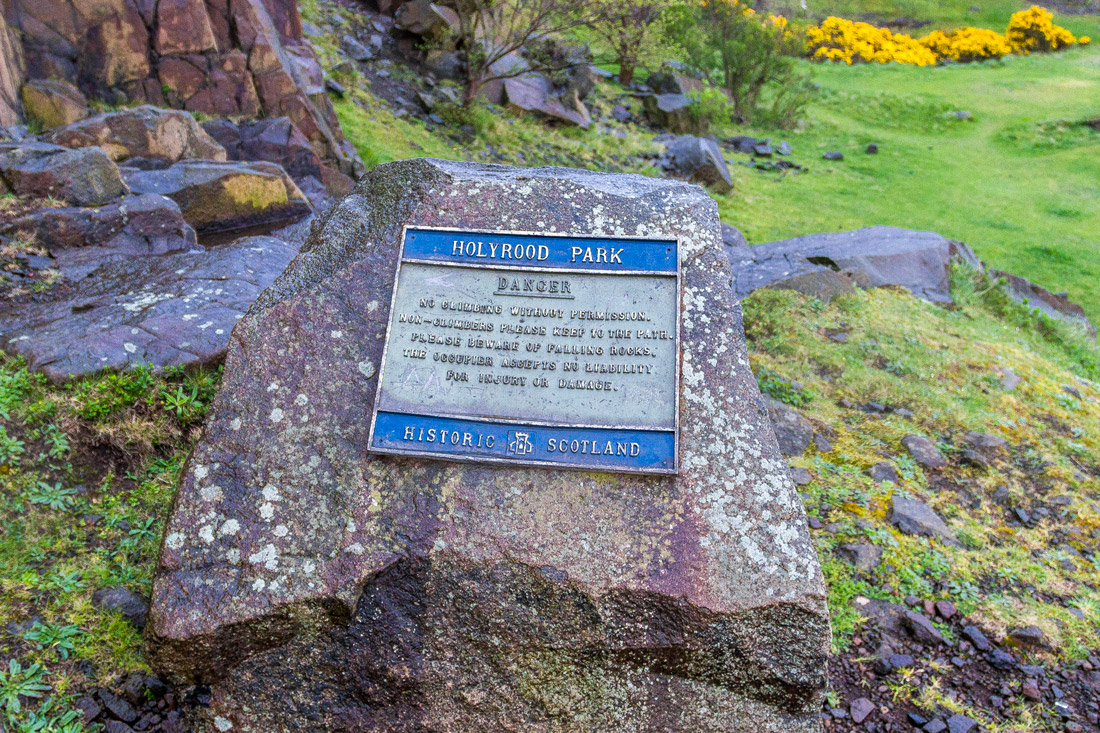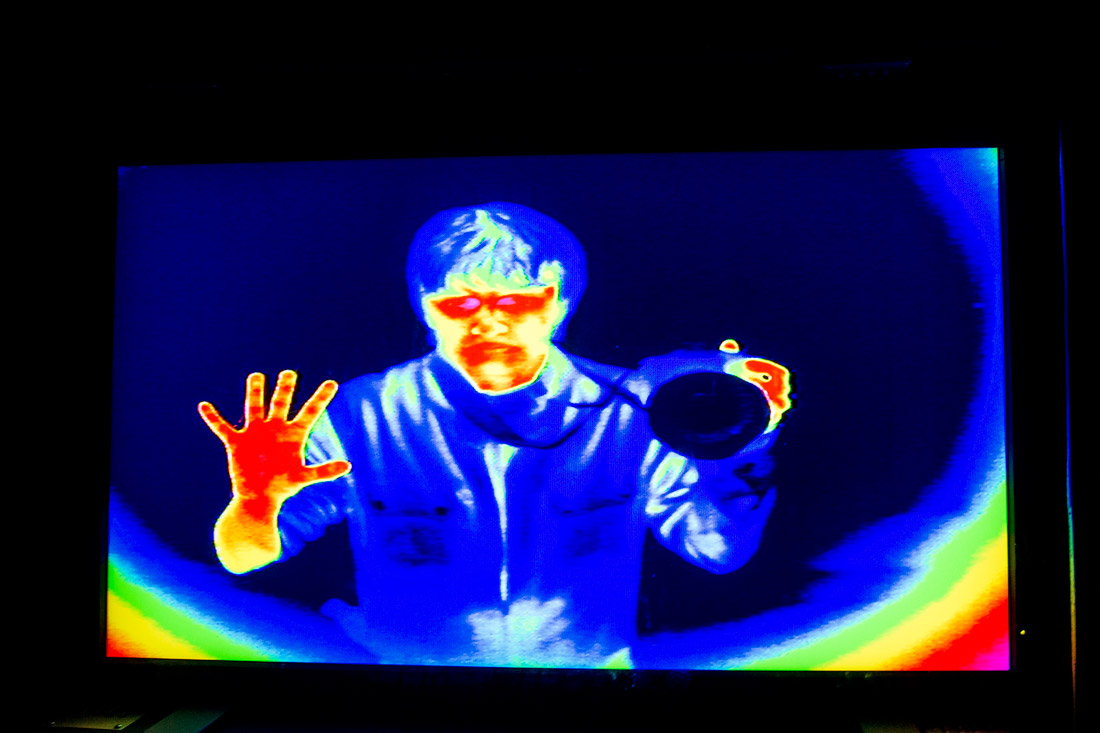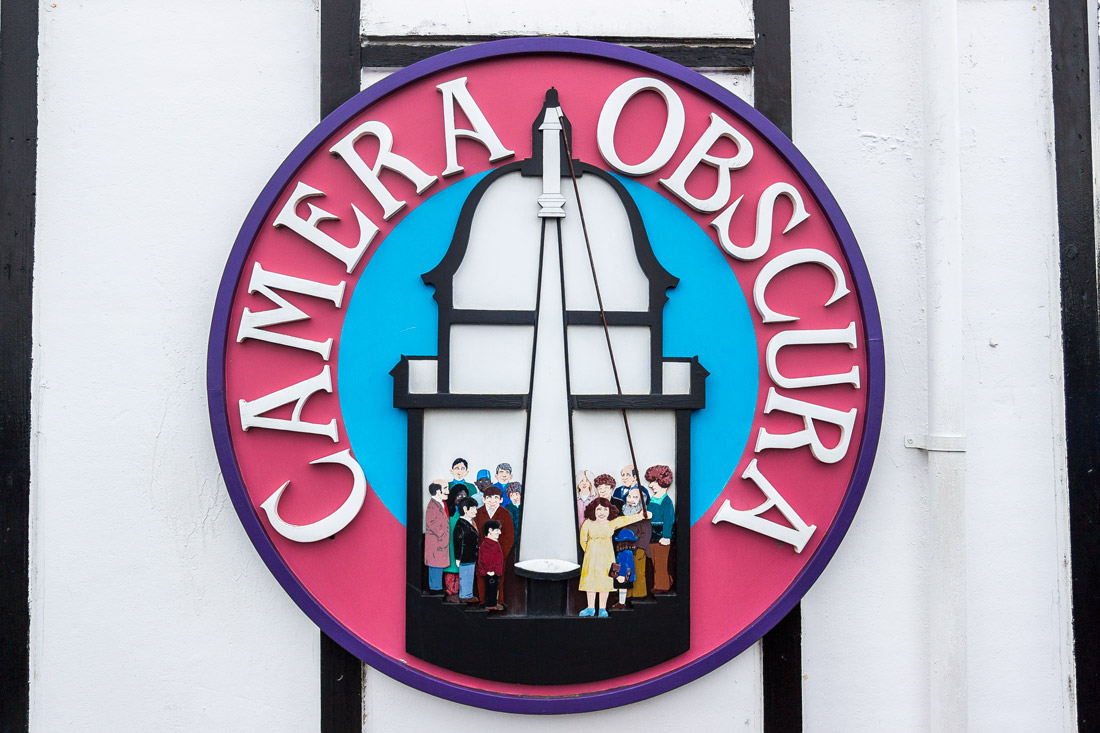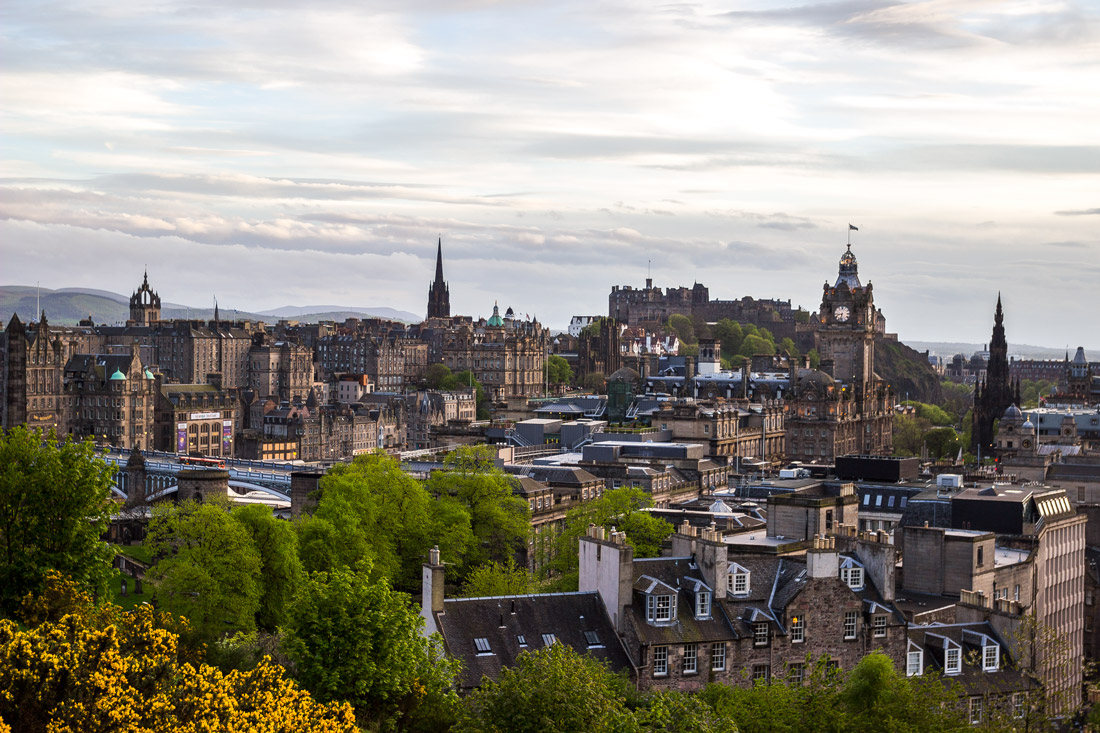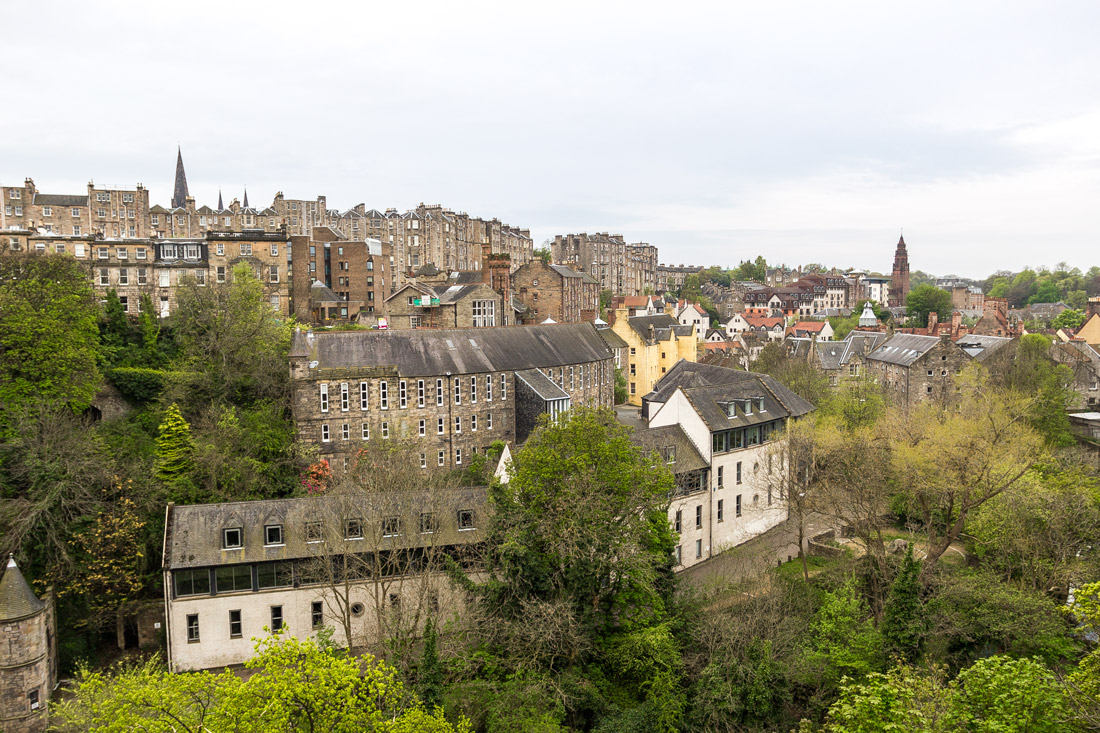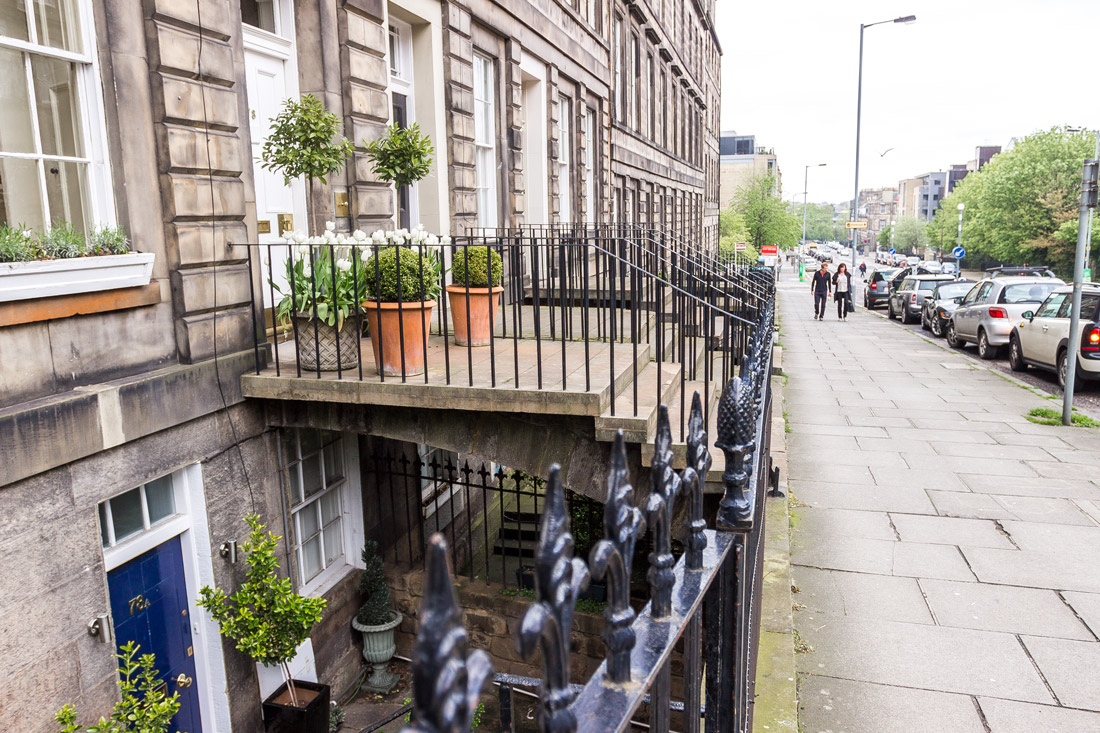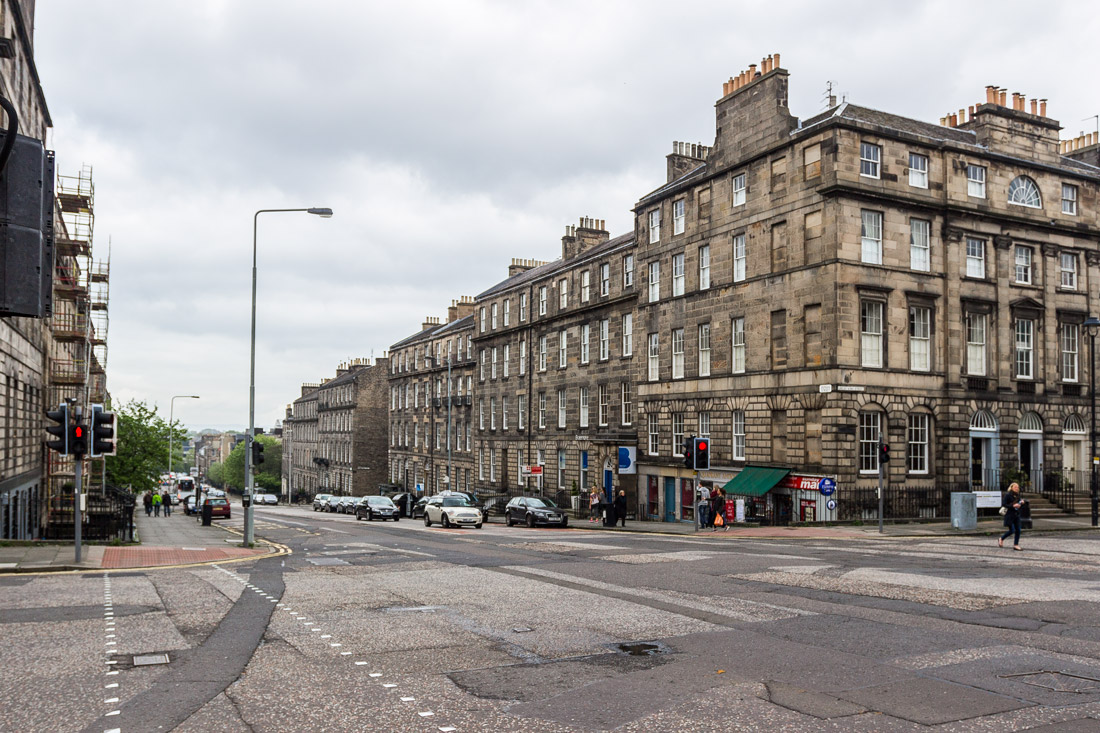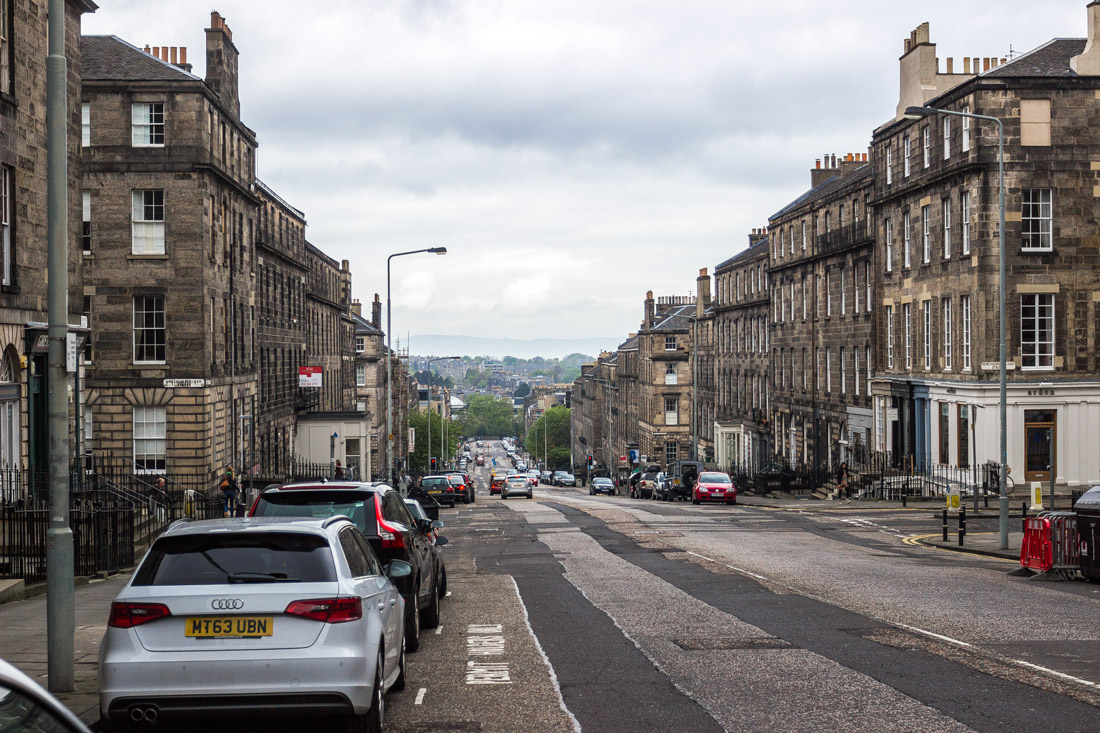Edinburgh
Everything I knew about Edinburgh, I knew from the movie “Trainspotting.” My imagination portrayed a gloomy, dirty city filled with criminals and heroin addicts. Perhaps that was partly true during the time the novel by Irvine Welsh was set. But in reality, Edinburgh turned out to be the most interesting city in the entire United Kingdom. It is cultural, ancient, rich, and diverse.
The city is notable, at least, for being built on an ancient volcano that became extinct about 350 million years ago. More precisely, it was built on two volcanoes simultaneously. One of them, the larger one, now remains as the remnants of a mountain, while the smaller one houses Edinburgh Castle, the city center, in its crater.
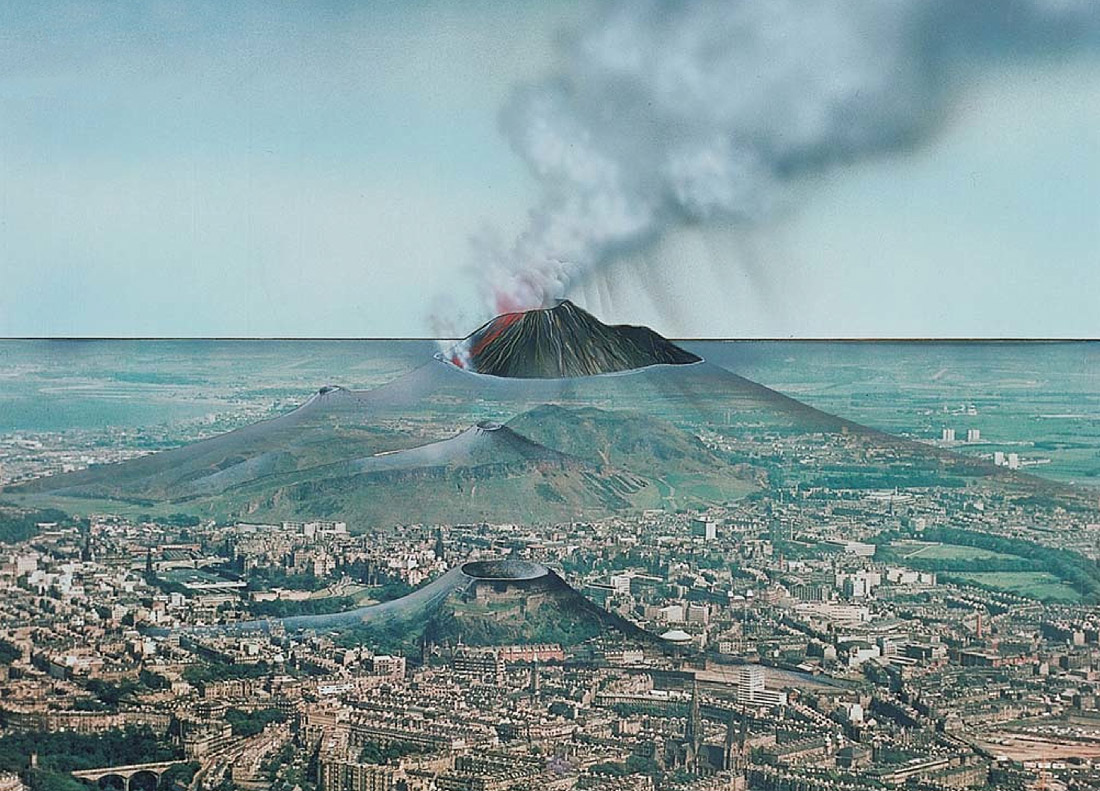
And it truly is a castle. Impregnable.
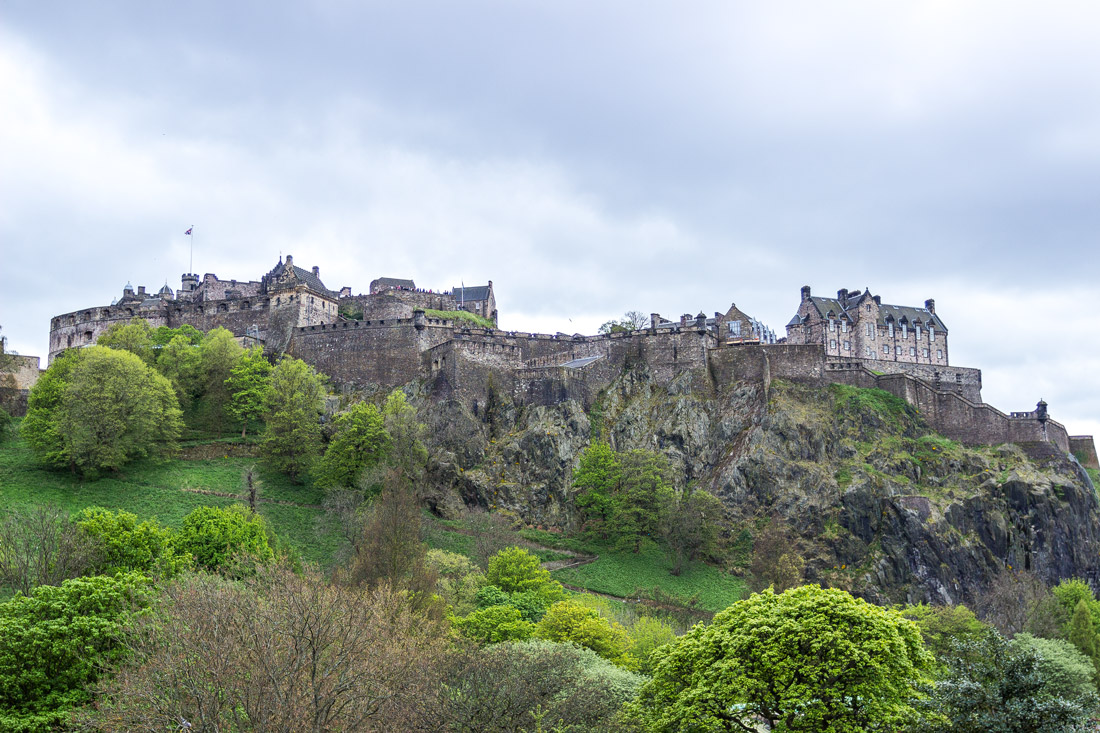
Growing with its walls right out of the cliff.
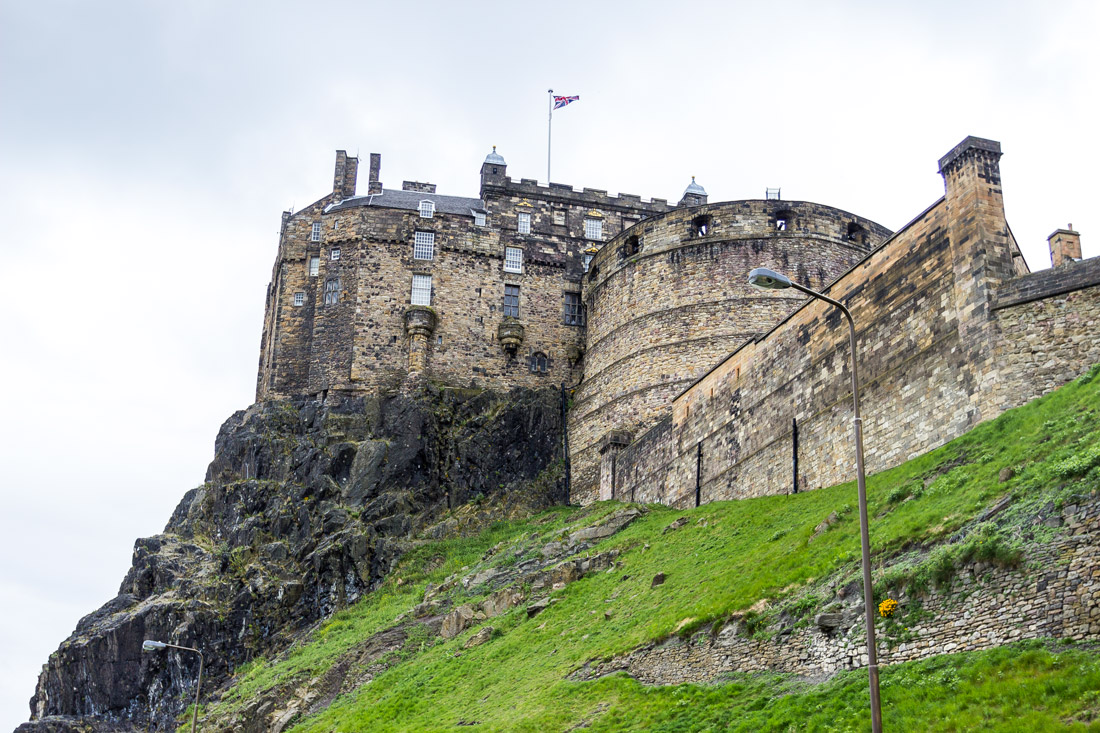
With cannons.

Adjacent to the castle is the main artery of Edinburgh — the Royal Mile. It is a sequence of four major streets seamlessly flowing into each other, with a total length precisely one Scottish mile, passing through the entire city. From these streets, narrow alleys branch off in different directions, connecting the central urban core with the rest of the city.
Interestingly, the Scots have their own mile. It is about 200 meters longer than the English mile. It was used before Scotland became part of Great Britain. Funny enough, it’s like having a Ukrainian verst that is 10 meters longer than the Russian verst.
The street signs on the Royal Mile are paired. The first sign indicates that it is the Royal Mile, while the second sign specifies which of the four streets it specifically is.
From the Royal Mile, narrow alleyway branches called “closes” extend in all directions. Old Assembly Close is one of these alleys.
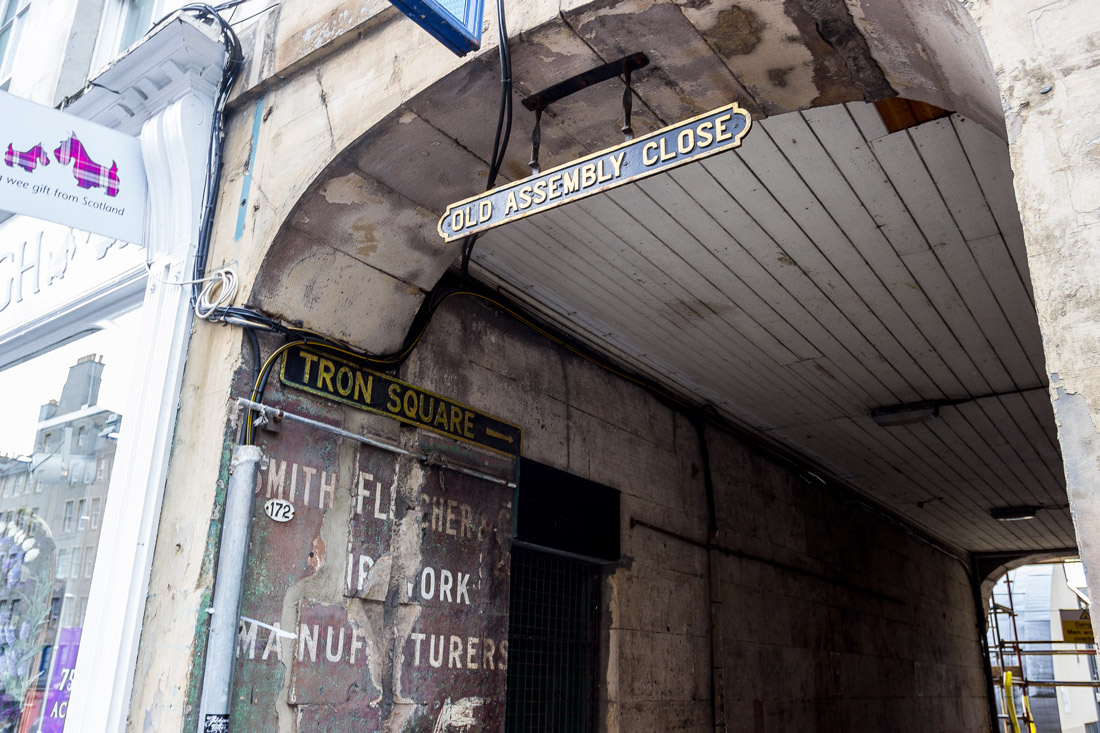
Here, you can find plenty of incredibly steep ancient inscriptions and plaques.
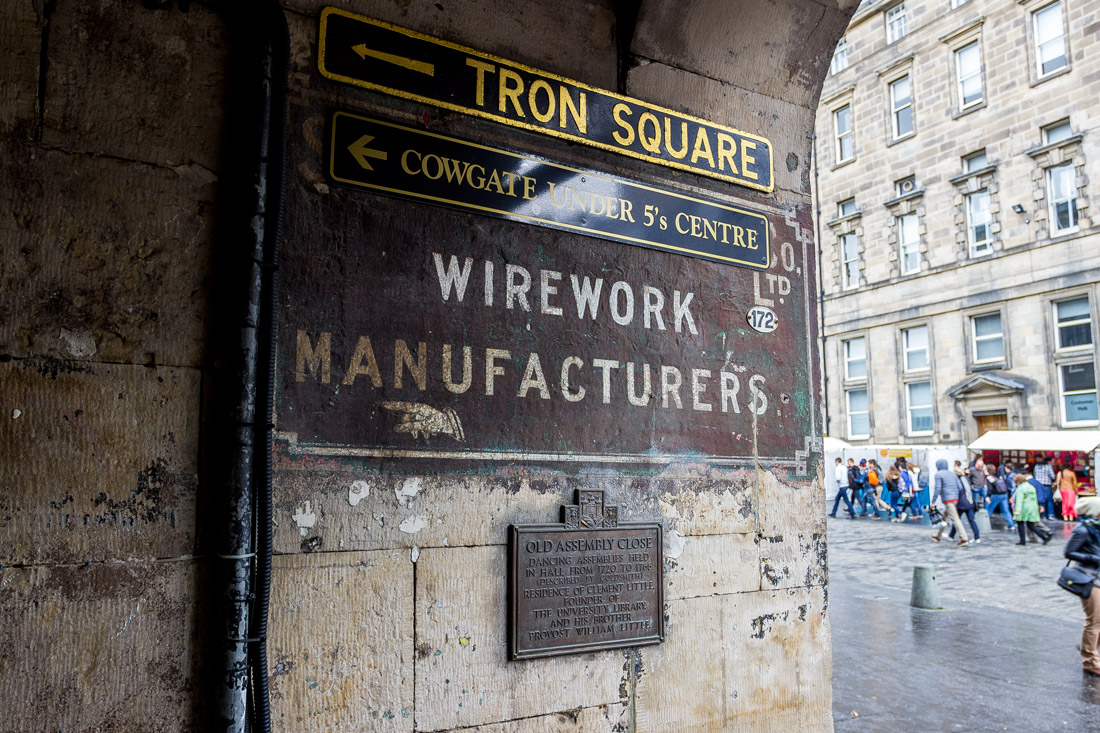
Spes Altera Vitae. Latin: “Hope for another life.” 1590.

Inside the narrow alleyways and closes.
The Royal Mile runs through the entire city, starting from Edinburgh Castle and ending at the building of the Scottish Parliament. From here, it’s not far to the remnants of the larger volcano known as Arthur’s Seat. A menacing overgrown crag rises at the foot of the city.
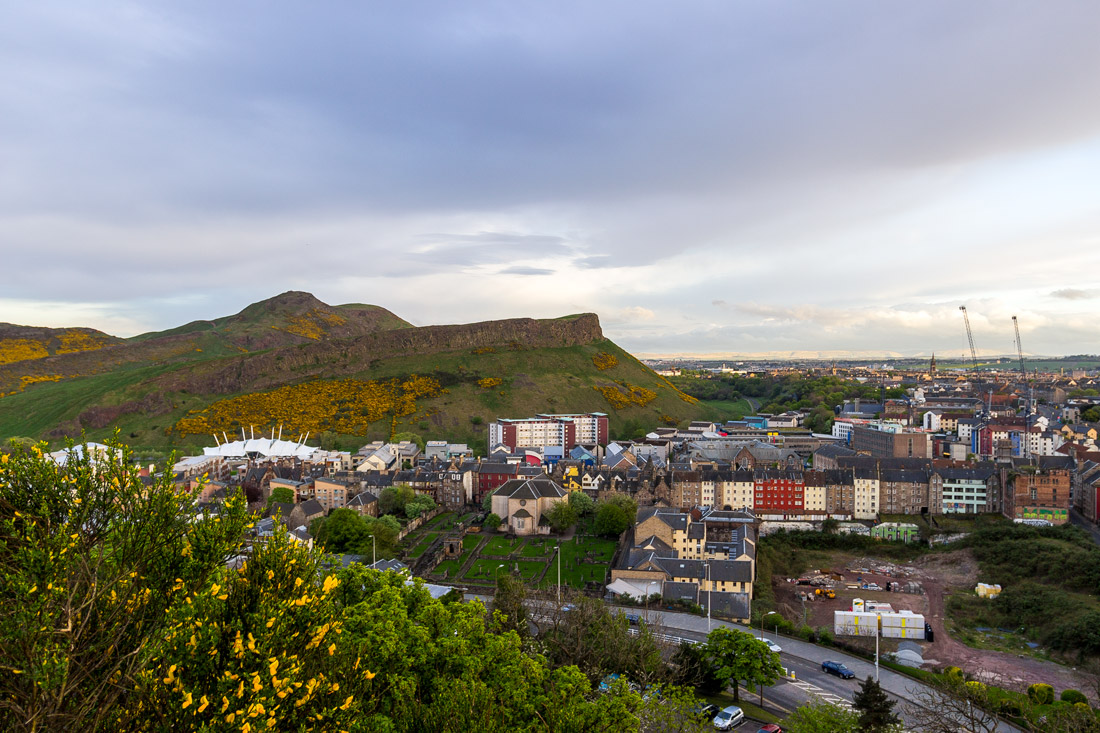
I ventured to conquer it in the best weather — a nasty drizzling rain, temperature around 15 degrees Celsius, eight o’clock in the evening. And even in such miserable weather conditions, someone was having a photoshoot and engaging in sports activities, running on the mountain.
The pathway. The mountain doesn’t seem big until you climb it. Compared to the pathway, the rocks on the right no longer appear so small, especially since they are only a small, upper part of the mountain.
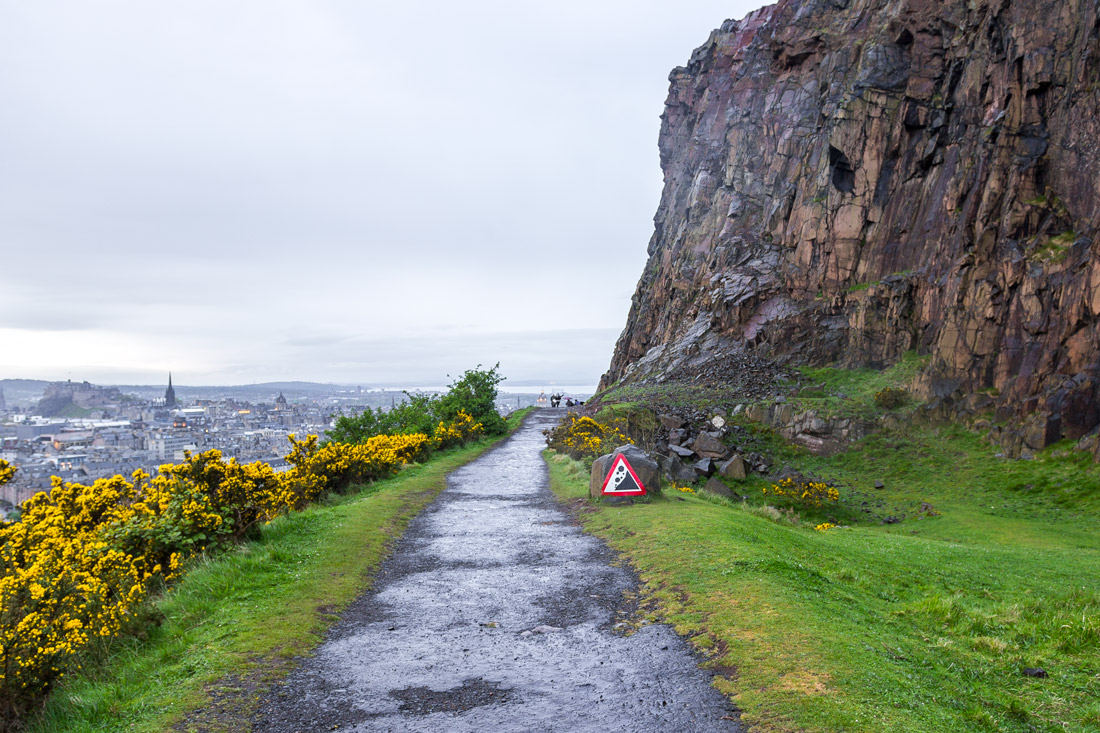
From Arthur’s Seat, Edinburgh Castle is clearly visible.

As well as the entire city.
Warning signs: Danger, beware of falling rocks” and “Danger, do not climb without permission.”
Another interesting sign: “Please take care. Breeding birds. This is an important site for ground nesting birds from May to August. Dogs running free can disturb breeding skylarks and their young. In the red areas please keep dogs on a short lead or under close control. Don’t linger if you are causing alarm to wildlife.”
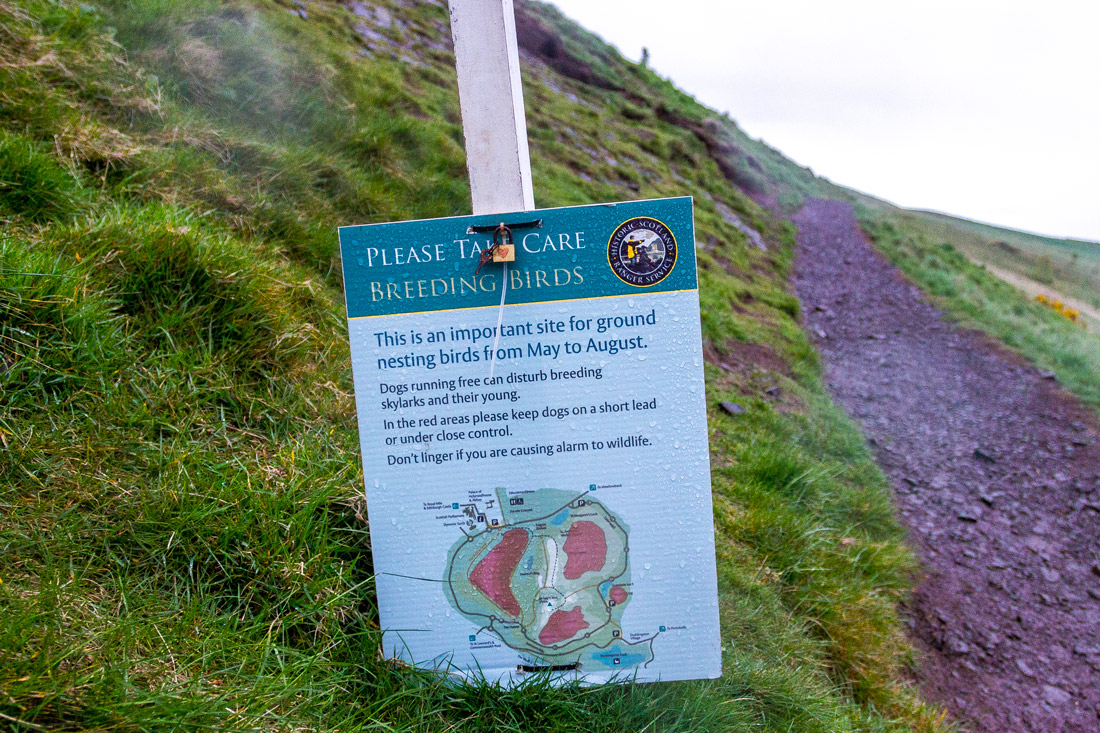
What is there in Edinburgh?
In Edinburgh, there is so much to see and experience that each paragraph from now on will begin with the words “In Edinburgh, there is.”
In Edinburgh, there is a monument to the Scottish writer Walter Scott. It is so massive that, unknowingly, one could mistake it for Cologne Cathedral.
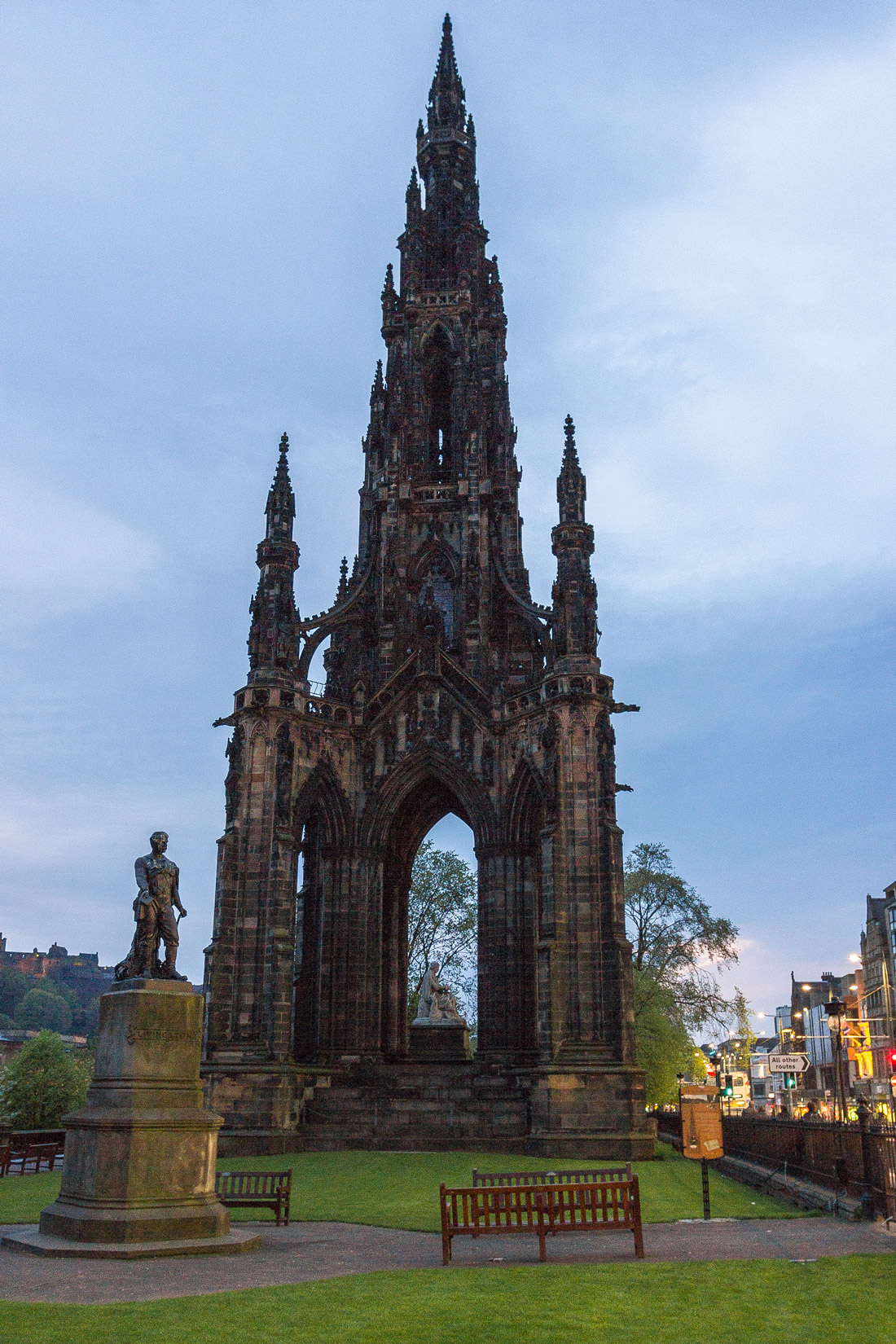
In Edinburgh, there is a monument to the Napoleonic Wars. It can be mistaken for a piece of ancient Athens.
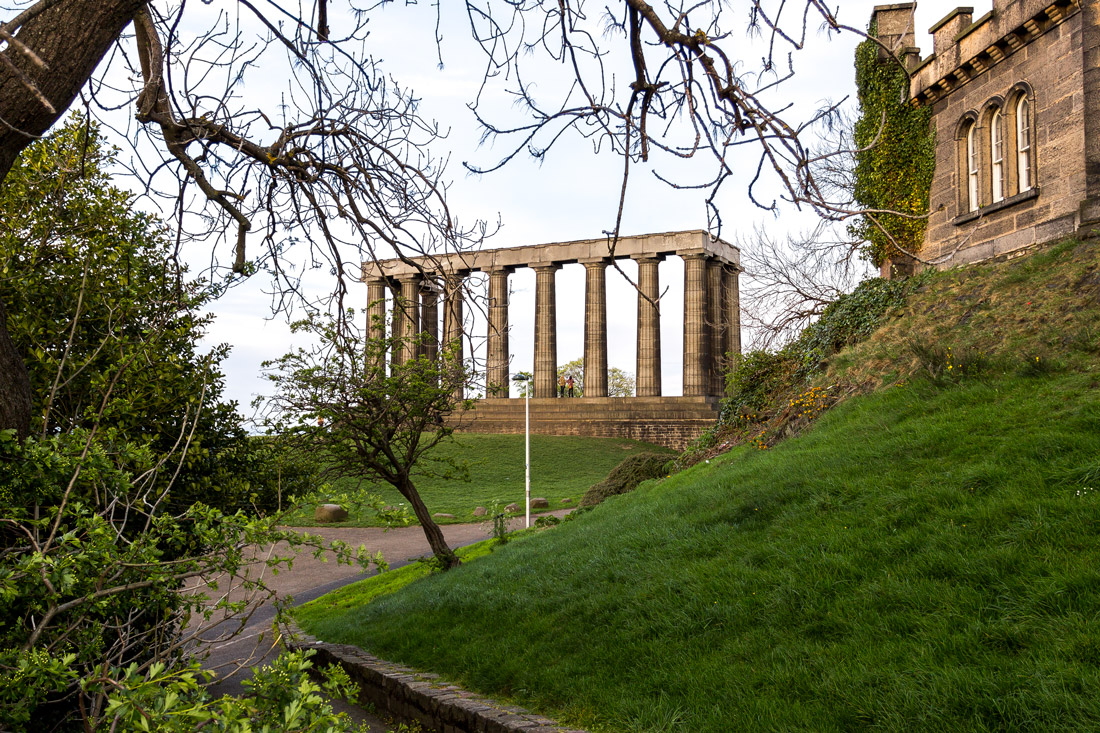
In Edinburgh, there is a monument to Admiral Nelson. It can be mistaken for a lighthouse.
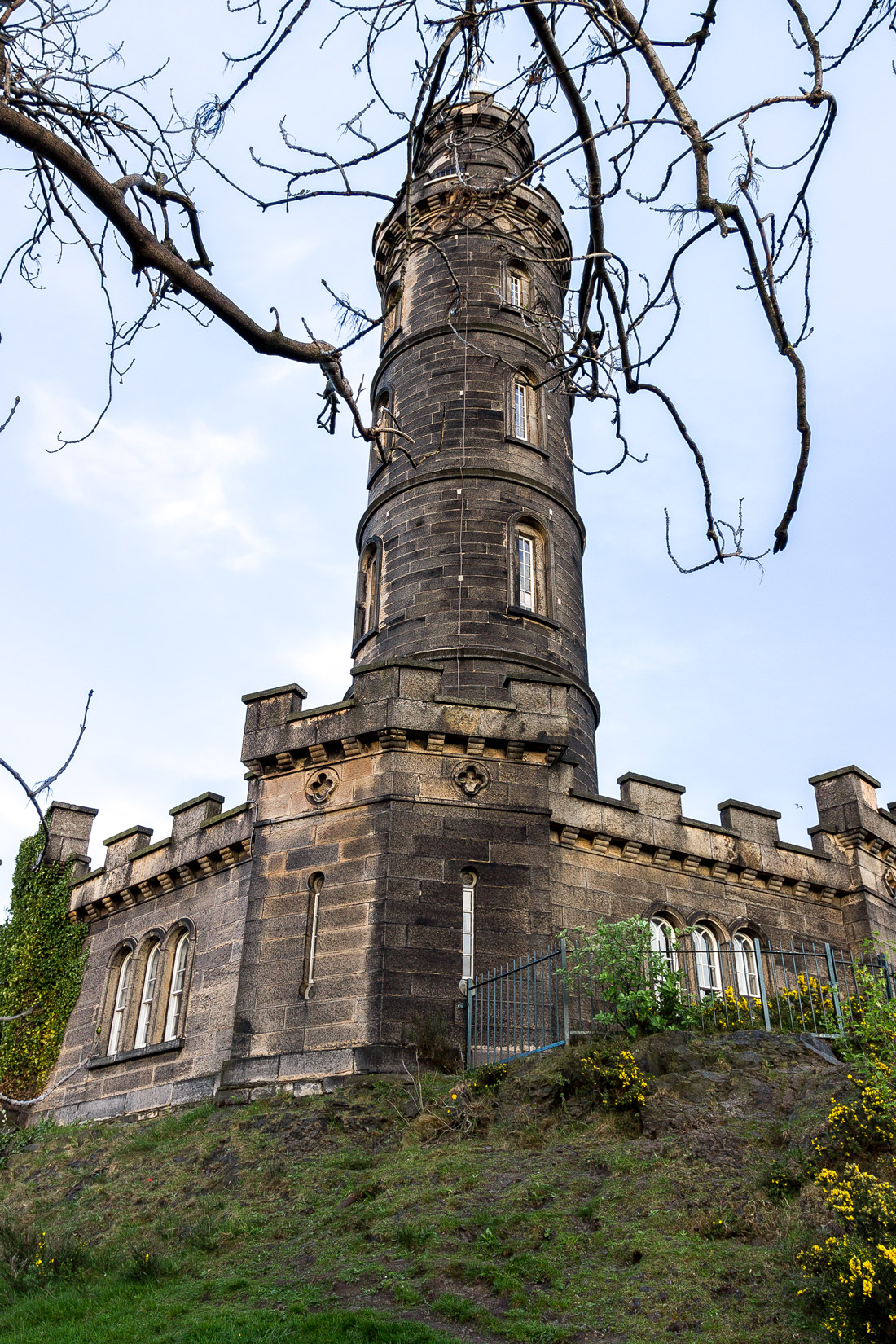
In Edinburgh, there is the Camera Obscura Illusion Museum.
In Edinburgh, there is a place to get a view of the city.
In Edinburgh, there are cherry blossoms and bonsai trees. In one of the city’s districts, where affluent people reside, Japanese gardens are greatly appreciated.
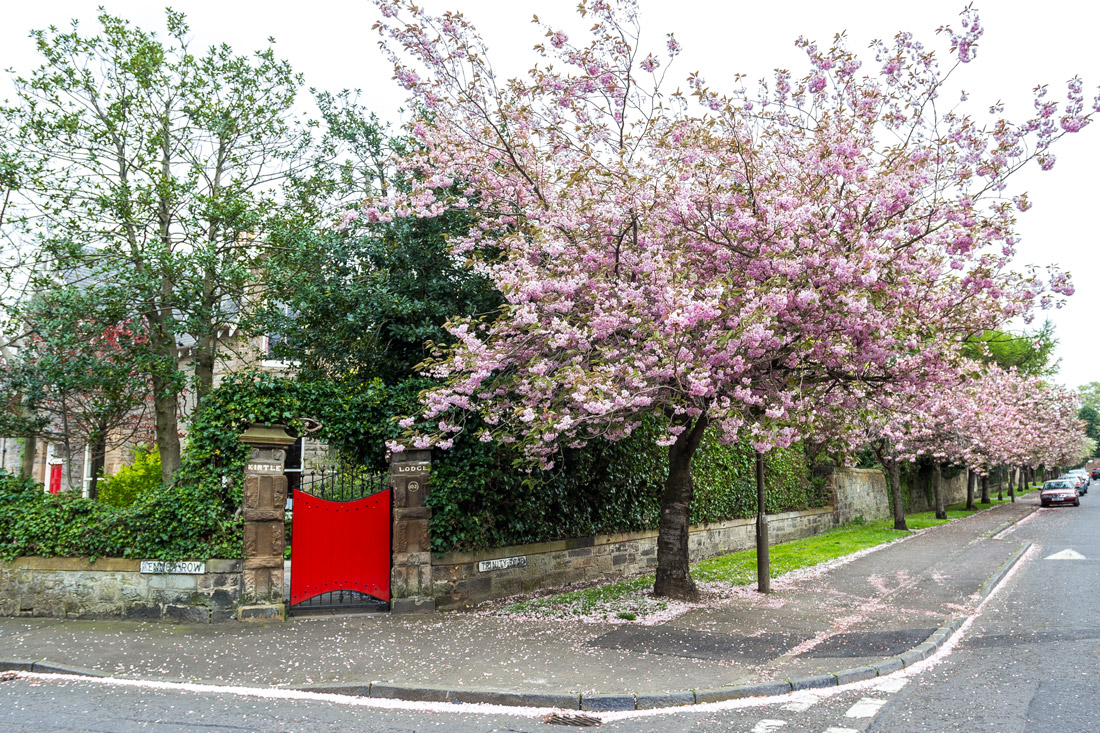
In Edinburgh, there are economically disadvantaged houses. These are located near the port, if I’m not mistaken. It is precisely from this area that the heroes of the book come from.
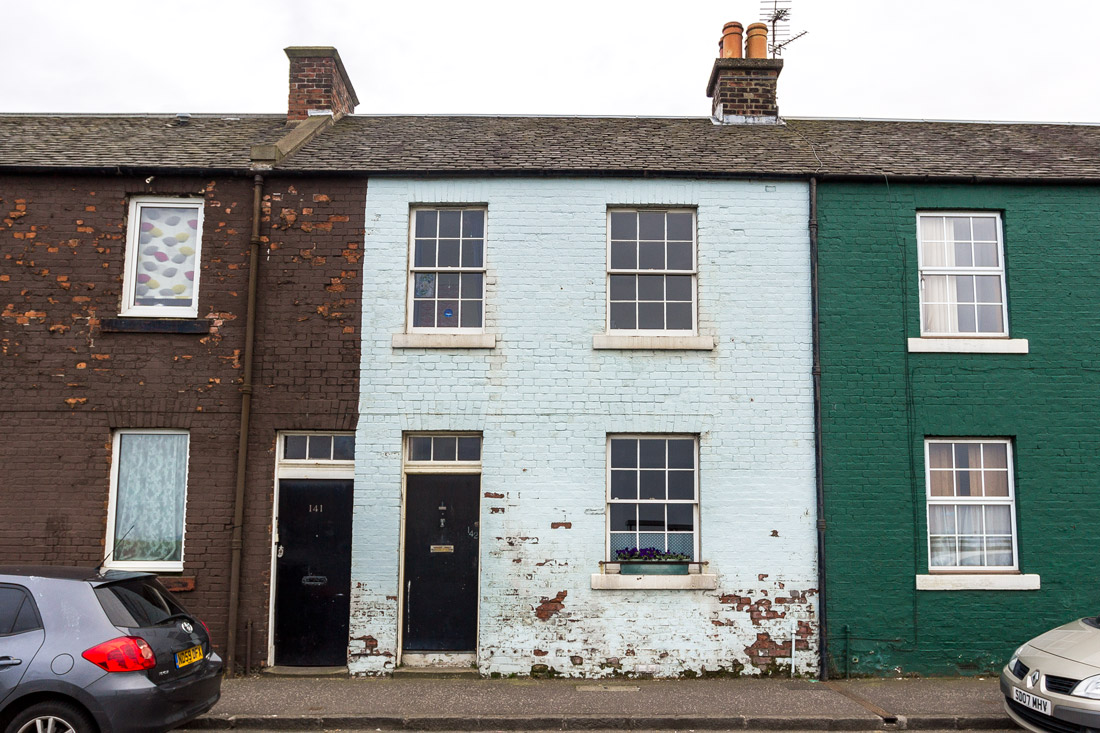
In Edinburgh, there are affluent houses.
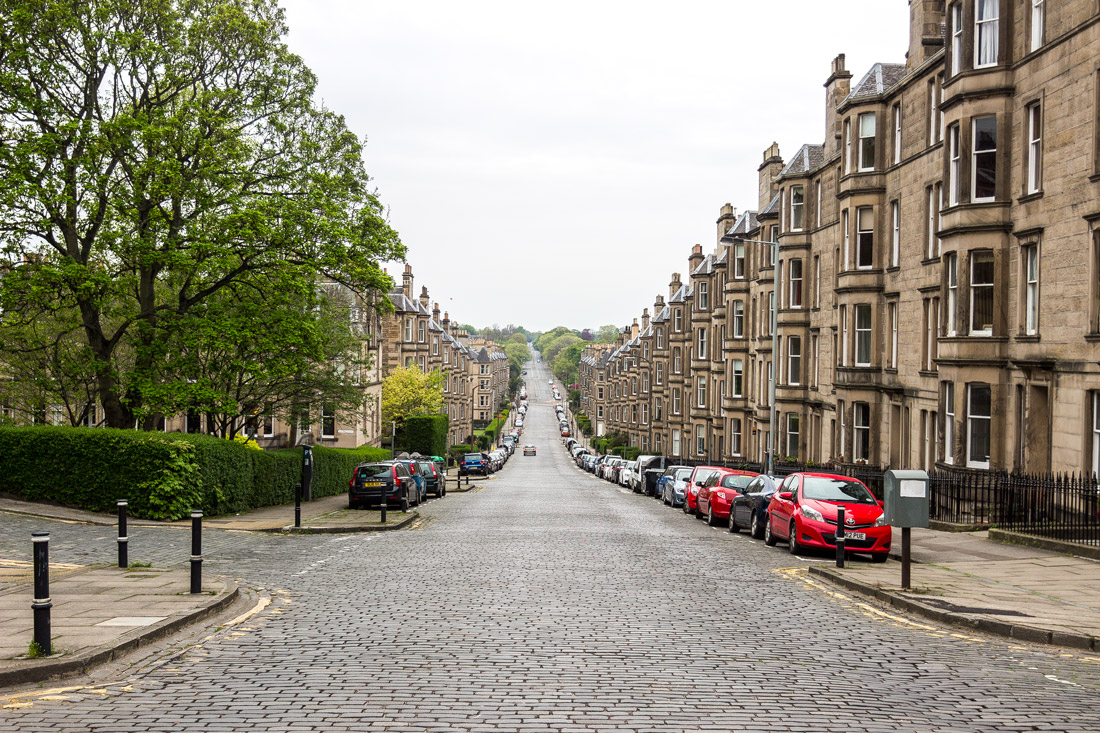
The old Edinburgh houses were built like those in London: with a ground floor that goes below the sidewalk and is furnished as a small front terrace.
And the streets here are very wide, like in Moscow.
It’s good in Edinburgh. The Scots themselves call the city “Edinbruh.”







